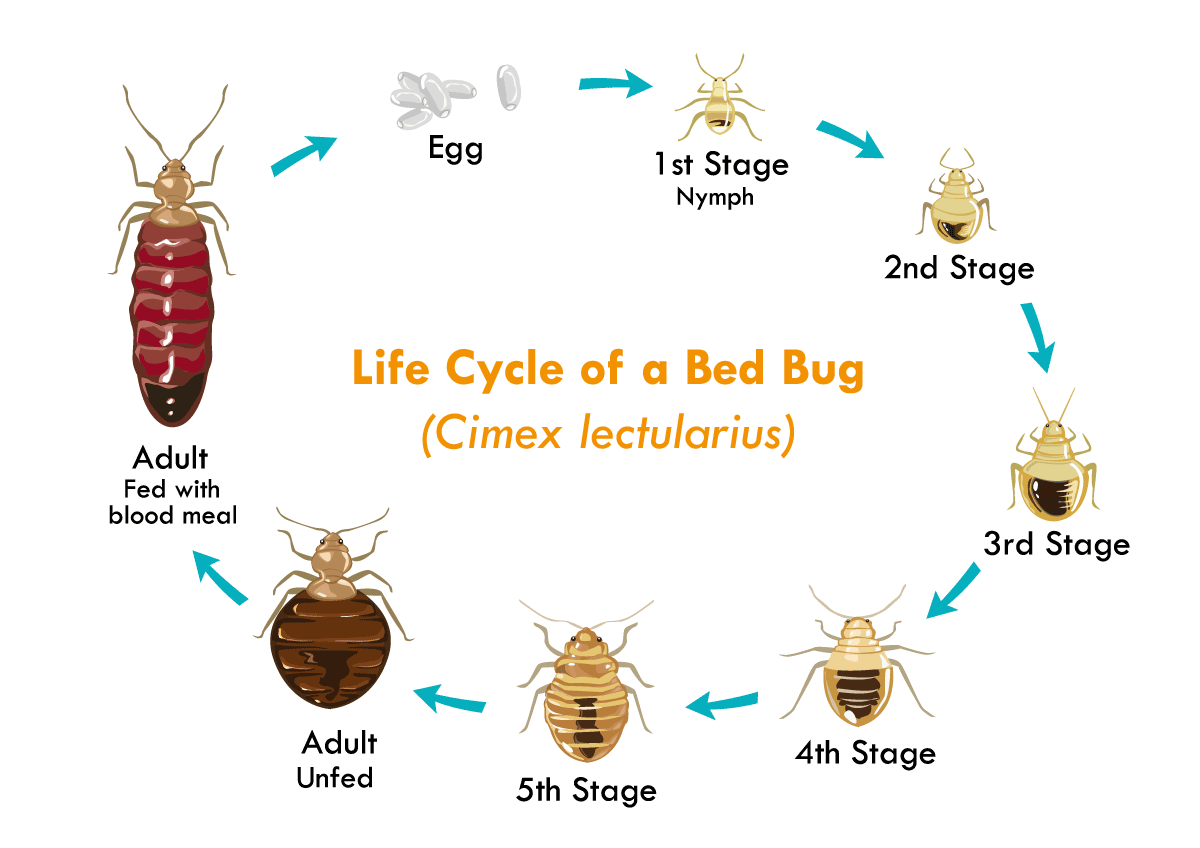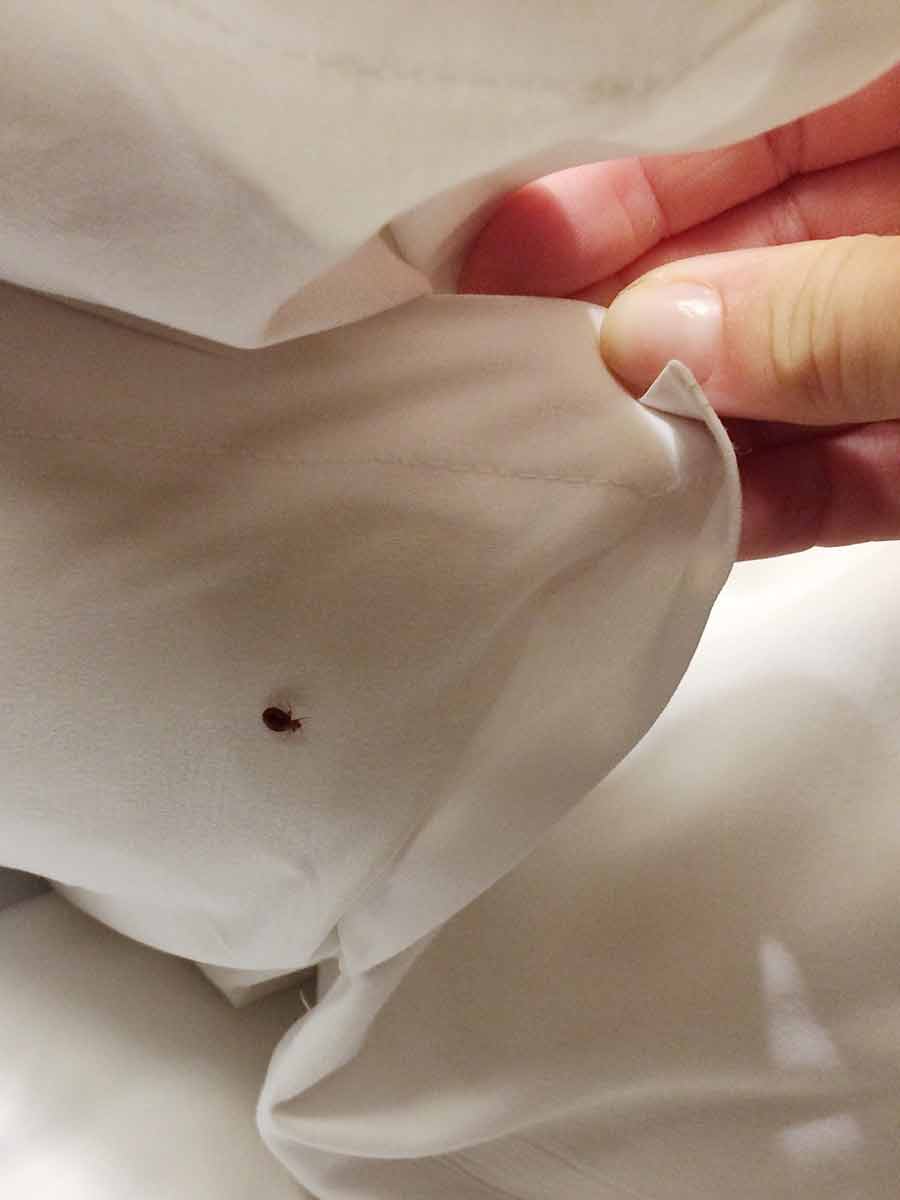How to recognise bed bugs?
Despite their small size, bedbugs are visible to the naked eye. When they have fasted, mature specimens have a flat, oval body with tiny, bristle-like hairs, a pair of thin four-membered antennae, and a length of approx. 4 — 8 mm. They are almost transparent in appearance. They also have a proboscis which is folded under the belly as well as stunted forewings on the head. Overall, they give the impression of having six legs.
After feeding, i.e. when they are full of blood, they appear light yellow and/or light brown to reddish brown and their length grows to about 9 mm. The rear part of the parasite has an increasingly blackish colour.
Droppings, blood stains, the skin of cocoons, dead bed bugs and an unpleasant, sweet smell — These are further distinguishing features of an infestation of bedbugs
The parasite leaves droppings, which are recognisable as small black spots (ink-like) or dark red spots. Such stains can be seen on bedding and/or the mattress, on the bed frame or behind electrical sockets, joints and everywhere where they live.
Small red blood marks that develop when biting into the human skin, can also be evidence of the presence of bedbugs.
In the moulting process, the insects strip cocoon skins, so-called exuviae. These very light-coloured shed skins have the shape of the pest and are found in their hiding places.
If you discover dead animals, you should definitely arrange for a professional to look for the possible presence of live animals.
The overall impression of a room is also very important. If you sense an intense sweetish smell, it is very likely that you will have a bedbug attack. The smell is caused by a gland messenger that bedbugs release as alarm pheromone.
The “bedbug line”
Once the ectoparasites have identified their host, they settle on their skin and begin their meal. They push their proboscis through the human skin to get to small blood vessels. Bedbug bites usually show up in one place or in a row next to each other, the so-called “bedbug line”. Reasons for the different bite patterns may be that the parasites pull their proboscis out of the skin when their host moves and continue to suck blood at a location next to it or that several bed bugs simultaneously suck blood side by side.
Classic places where bedbugs bite
Bedbug bites are most likely to appear on exposed body parts: Face, neck, arms, legs, feet, back




